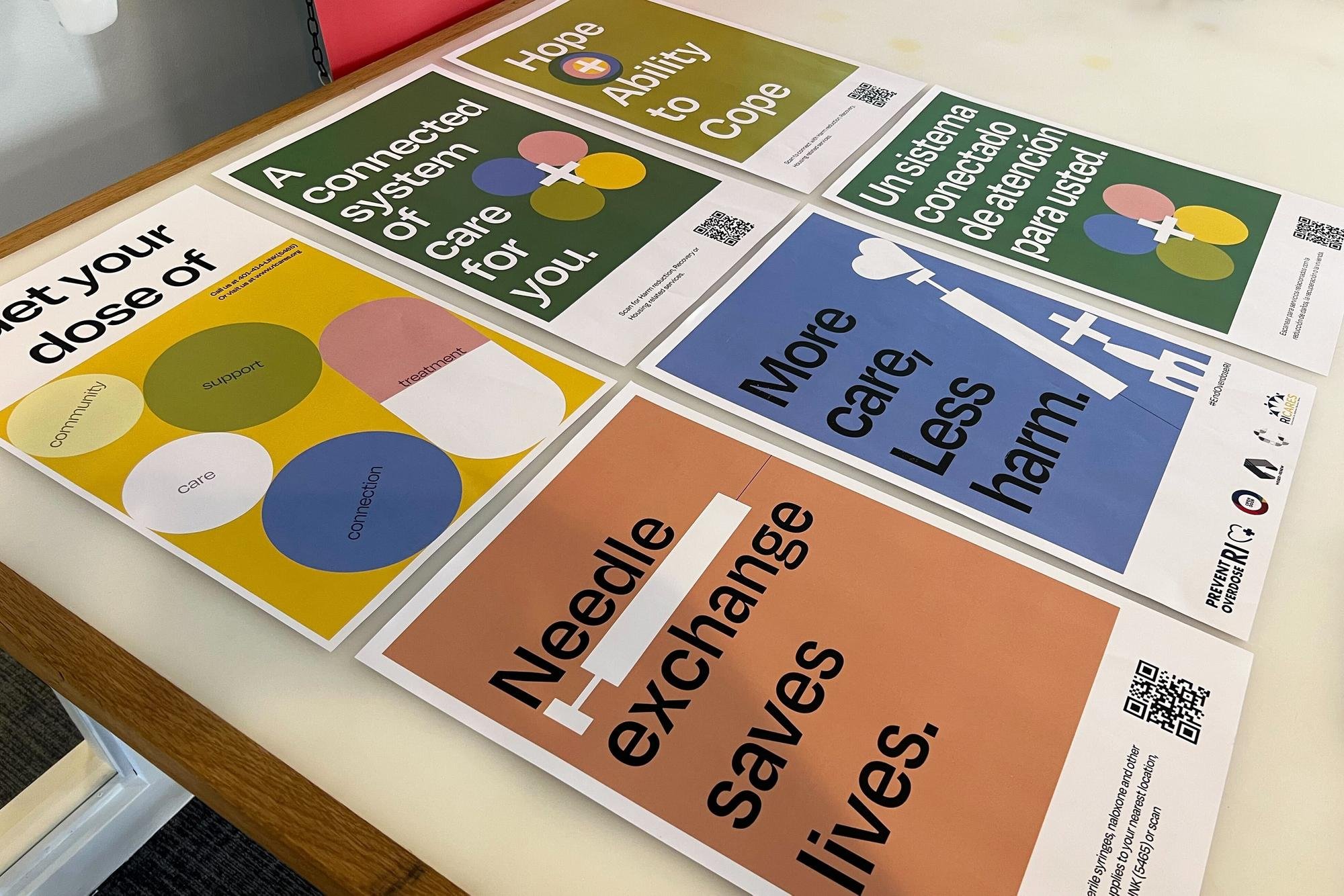

Circles of Care
Year : 2022
Role : Designer, Researcher
Tools : Adobe Photoshop, Illustrator, Rhino 3D, Miro
Skills : Visual Design, Ethnographic Research, Experience Design, Public space design, Strategy
A comprehensive approach to designing interventions to tackle Opioid addiction and overdose in Rhode Island, the first state to run a 2 yr pilot program to test and permit Harm Reduction Centers (HRC’s)
How might we transform public spaces to integrate harm reduction facilities, educational hubs, and develop coherent healthcare communication strategies, while leveraging public transportation and community, to holistically address the opioid crisis, prevent overdoses, and foster open dialogue?
CONTEXTOn July 7, 2021, Rhode Island became the first state to sign a legislation supporting a two year pilot program to prevent drug overdoses with the establishment of harm reduction centers in the state. The opioid crisis has become a major public health issue across the US, with a high incidence of opioid-related overdose deaths. The need for harm reduction centers to provide immediate assistance and support to those struggling with opioid addiction is more critical than ever. To arrive at scalable solutions, such a complex problem is being tackled at both fronts - community based and evidence based. Project work involved intensive research and working with Center for Complexity (CfC), COBRE on Opioids and Overdoses, Project Weber Renew, Open Door health, Brown University’s healthcare research and Sen. Joshua Miller. 
Editorial gathering resources for designers, students and healthcare community
Posters, QR Code takeaways & Stickers![Structure 1 [Experiential+Informative]](https://images.squarespace-cdn.com/content/v1/634366878de2135acc49765a/279953ad-9870-4059-bdf6-4a29037c3a59/DSC_0829.jpg)
Structure 1 [Experiential+Informative]

![Structure 2 [Functional Store]](https://images.squarespace-cdn.com/content/v1/634366878de2135acc49765a/3c35cc04-4b10-470d-b084-80c71b764625/DSC_0851.jpg)
Structure 2 [Functional Store]



PROJECTI proposed an inclusive and humane system of care with comprehensive design strategies to tackle stigma associated with opioid use and reduce overdoses, and provide vital resources to save lives. Mapping research across city infrastructure and healthcare, I could employ transdisciplinary services, graphics and spaces to prime and sensitize people into transitioning into this system of care. The communication strategy involved collaborating with local stakeholders, including harm reduction center staff, health care providers, and community members to develop effective messaging that resonates with the user. 













